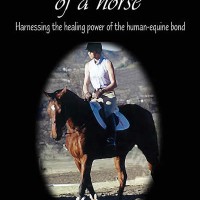
Today, somatic disorders are readily affecting a significant percentage of the American population. The group of somatoform disorders have been called the most common psychiatric problems seen by general practice medical professionals.[1] A large scale study of over one thousand patients examined by their general practitioners, reported that 16 percent of patients met the criteria for severe somatoform disorders, and 22 percent could be diagnosed with mild impairment.[1] More telling even was that many of these patients also complained of depression and anxiety. In a further study, approximately 36 percent of hospital patients who met the criteria for any somatoform disorder also had other mental health problems, such as depression and anxiety.[2] Looking internationally, a study in Belgium showed that somatization syndrome ranks as the third highest psychiatric disorder, with a prevalence rate of 8.9%.[3]
So what is a somatoform disorder?
Somatoform disorders are a group of disorders characterized by physical symptoms that might point to a medical disorder. Somatoform disorders are none the less psychiatric conditions because the physical symptoms that appear cannot be fully explained by a medical disorder, substance use, or another mental disorder. Therefore, somatoform disorders often mystify medical providers who must look past the physical complaints, in order to correctly diagnose the disorder.
Once the disorder is diagnosed, the difficulty begins as somatoform disorders represent some of the most treatment resistant cases. While many experiential forms of therapy are commonly employed, one that has recently gained more attention is equine therapy.
Often called “flight animals”, horses have a unique quality that makes quite helpful in treating somatoform disorders. Horses, unlike dogs or cats, are quite hypervigilant; however, they do not spend a significant amount of time if the sympathetic (activated) nervous system. In fact, most horses spend as much as 98% of their time in the parasympathetic nervous system — which is used for activities such as sleeping, resting and digesting.
Horses do, however, switch rapidly from parasympathetic to sympathetic nervous system activation when external events require fleeing. Yet, as quickly as a horse’s nervous system is activation, the excess energy created is expended and the horse returns to a calm, resting state.
On the other hand, a person with a somatoform disorder becomes activated, does not expend the excess energy, and instead, remains in a sympathetic mode. The energy, however, becomes bound physically, which often causes the physical complaints, such as headaches, digestive distress, and sometimes neurological impairments. For people such as this, the sympathetic nervous system can become so overused that it actually begins to wear out. This condition is called “adrenal exhaustion” and is often describes as “wired but tired.” In cases like this, the person may have becomes so overrun by the stress response that he/she is unable to induce a state of calm, and may even have trouble identifying what it may feel like.
Here is where horses come in. Going at the disorder from a “bottom up” model, that is to say physically before cognitively, horses, because they are already often in a parasympathetic mode, have an incredibly calming effect on people. Much in the same way that a herd of horses all sync together physiologically, a person’s nervous system in the presence of a horse will be to emulate the horse’s. What of course this results in is a person who feels calm without having to “think it through”. From this point, the person can then be able to identify what calm feels like, and later progress toward creating this feeling on his/her own — all without saying a word.
After all, for people with somatoform disorders, it is often the thoughts that block the physical expression of feelings.
REFERENCES
1. De Waal, M. W. M., I. A. Arnold, J. A. H. Eekhof, and A. M. van Hemert. 2004. Somatoform disorders in general practice: Prevalence, functional impairment and comorbidity with anxiety and depressive disorders. British Journal of Psychiatry 184: 470-476.
2. Fink, P., M. S. Hansen, and M.-L. Oxhoj. 2004. The prevalence of somatoform disorders among internal medical inpatients. Journal of Psychosomatic Research 56: 413-418.
3. Baruffol E, Thilmany MC. Anxiety, depression, somatization and alcohol abuse. Prevalence rates in a general Belgian community sample. Acta Psychiatr Belg. May-Jun 1993;93(3):136-53. [Medline].